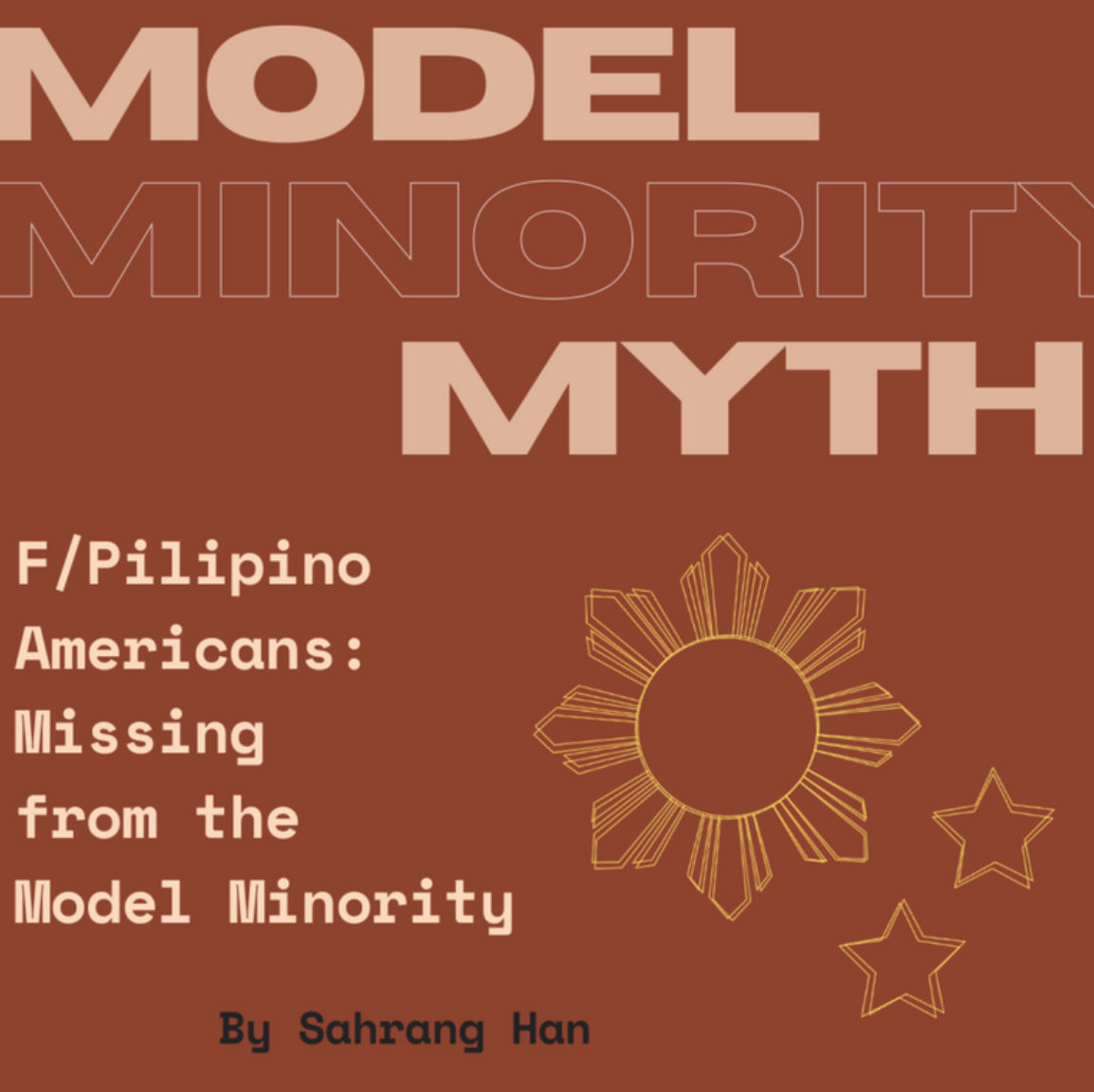** Author’s Note on Community Terminology: there is an academic and cultural dispute over whether Filipino or Pilipino is best to describe the diaspora from the Philippines. In recognition of the indecision, F/Pilipino is used in this piece.**
Arguably, the biggest plague of Asian America’s history is the image of being the model minority. This is occasionally regarded as the model minority stereotype or the model minority myth. Both titles allude to the elusive, detrimental nature of the concept. The model minority image affects all Asian Americans in some way, but not all Asian Americans are affected equally; F/Pilipino-Americans are usually exempt from the stereotypical expectation due to intercommunity tensions that have become embedded into F/Pilipino and F/Pilipino American culture.
The model minority image was introduced in the 1960s to acknowledge Japanese Americans’ successful assimilation into white American society. Usage of the term by popular press and media hoped to detract attention from the growing civil rights movement pioneered by Black and Latinx Americans [1] . Diverting attention to the quiet, economically successful, law-abiding Asian Americans was a socio-political ploy to promote submissiveness in communities of color.
The F/Pilipino American community is usually missing from the model minority conversation altogether. When we are included, we immediately get lumped with other Asian American populations. In these situations, community conditions are completely ignored. For example, Filipino households are often multi-generational, with multiple people working to provide income; sometimes, individuals work multiple jobs at once [2]. This combination results in a higher household income, but it cannot be fairly compared with a household who reports the same amount of income … but from a single source.
When layered on top of other social discriminations, F/Pilipino Americans are left on a playing field unique from other Asian American communities. This can be described as a “not-quite” state, which gives way to many intercommunity tensions such as colorism and crab mentality. To understand how these came to be, let us look at some of the history of F/Pilipinos in the US.
The first major wave of F/Pilipino immigration was in the mid-1900s; those immigrants are regarded as the manongs (literally “older brothers” in Ilokano, but commonly used to mean “elders”) of the F/Pilipino American community. The manongs endured many obstacles in their lives, especially in trades of agricultural work and caretaking. Their struggles pioneered pathways for successive F/Pilipino generations to live more comfortable lives in the United States, but much of today’s F/Pilipino Americans’ lives are far from comfortable.
Many F/Pilipino Americans live with a residual colonial mentality, meaning that socially, we have cast aside our indigenous cultural values in exchange for “glorifying” the values of our colonizer [3]. Colonial mentality can be noticed in F/Pilipino American families’ fascination with figures such as Jacqueline Kennedy and Princess Diana, love for Western pop music like the Beatles and the Bee Gees, and interest in American pastimes and fast food. Idolizing American culture results in ethnic inequality between F/Pilipino America and white America. F/Pilipino Americans occupy a lower social tier than white Americans because of our preference for white America’s cultural icons over F/Pilipino cultural icons. And yes, the two categories remain exclusive because there is not enough F/Pilipino representation in Western media platforms to recognize a middle ground. Model minority communities are seen as having assimilated into white American culture, which F/Pilipino Americans have not done; we occupy a separate, lesser status, enforcing segregation between F/Pilipino Americans and other model minority Asian Americans.
Another reason for F/Pilipino Americans’ exemption from the model minority image is crab mentality. Crab mentality’s namesake is the image of crabs trying to get out of a bucket; in order for one to make it out, it must pull down everyone else [4]. In practice, crab mentality is seen in tsismis (“gossip” in Tagalog), an integral component of daily F/Pilipino life centered on belittling and criticizing others. In F/Pilipino American youth, crab mentality plays out in student organization politics and in Filipino beauty pageants, consequently leading to emotional and mental burnout. This competitiveness hinders the F/Plipino American community’s building abilities. Instead of banding together to advance representation of F/Pilipinos in many occupations, individual members choose to tsismis about each other and bring each other down, resulting in a weaker ethnic community. The fragmented F/Pilipino American community does not rank alongside the Chinese American, Japanese American and Korean American model minority communities.
The model minority image is not inherently bad. There is nothing wrong with wanting to succeed in a new country or with wanting a more stable future for your children. However, controversial and demeaning assumptions of the model minority image disregard entire immigrant communities’ struggles. As previously mentioned, this discreditation does more harm for relationships between immigrant communities than good. It could be argued that it is better for the F/Pilipino American community to abstain from becoming a model minority because our historic and contemporary struggles will gain more recognition outside the homogenizing label. But, who gets to make that call?
[1] Nadal, Kevin L. “Filipino and Filipino American Family Cultural Values.”
[2] David, E. J. R., Sharma, D. K. B., & Petalio, J. (2017). “Losing Kapwa: Colonial Legacies and the Filipino American Family
[3] See Nadal
[4] Lasquety-Reyes, Jeremiah. “In Defense of Hiya as a Filipino Virtue.”

Comments are closed.